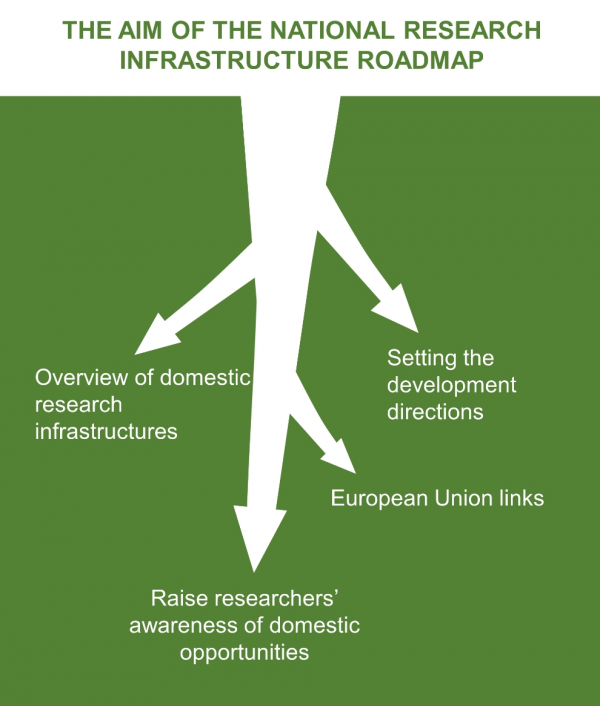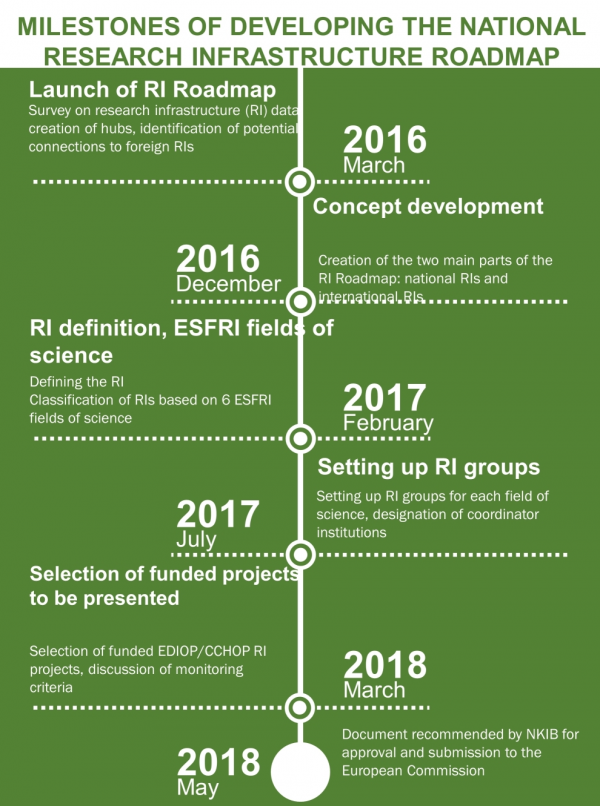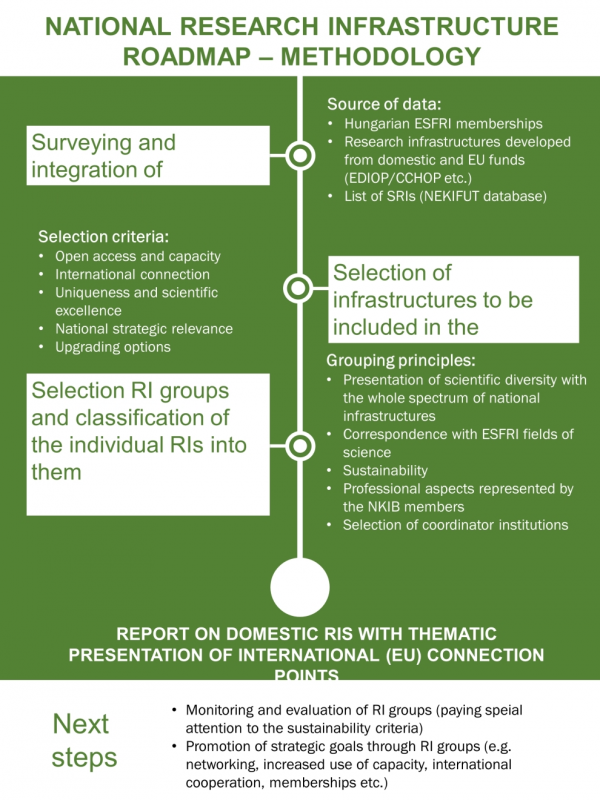The National Research Infrastructure Roadmap aims to identify the major research infrastructures (RIs) in Hungary, provide an insight into their operation, present the nature and diversity of domestic capacities, draw the attention of the national and international research community to Hungarian research capacities and opportunities, provide background information for setting further development directions, and outline connection points to European infrastructures and cooperation relationships.
The European Commission’s report on the international consultation on the long term sustainability of research infrastructures[1] highlights that “ensuring access to world-class research infrastructure facilities is crucial to staying at the forefront of science and technology and remaining competitive in a global knowledge-based economy. But some science facilities are just too big or complex for a single country to build and manage alone. The European Strategy Forum for Research Infrastructures (ESFRI) was set up in 2002 to help coordinate the development of large-scale research facilities in the European Research Area (ERA).”
Cutting-edge research infrastructures are so extremely resource demanding (in terms of equipment, appliances, data and human capacities) that no EU member state could establish and operate them alone cost-effectively. The total annual budget of European research infrastructures[2] is around EUR 10 billion. The selection and development of research infrastructures require a coordinated strategic approach at European level, which is coordinated by the European Strategy Forum on Research Infrastructures (ESFRI).
The European Strategy Forum on Research Infrastructures (ESFRI) was created in 2002 to coordinate the foundation of and access to research infrastructures necessary for meeting the long-term needs of European research communities. It aims to strengthen the coherence and strategic approach of the EU’s RDI policy on RDI and to launch initiatives promoting the more efficient use of RIs. It also aimed to map existing research infrastructures and create a roadmap which overviews future goals for the next 10-20 years. The first ESFRI Roadmap was published in 2006 and updated several times later on. Following the European trend, EU member states have continuously elaborated their national roadmaps since 2008, so most of them have this document.

In Hungary the creation of the National Research Infrastructure Roadmap is marked by several stages and milestones. Preparations are already started in 2008, in the framework of the National Research Infrastructure Survey and Roadmap (NEKIFUT) project which identified the strategic research infrastructures (SRIs) which have outstanding importance for the economic and social development. The register of research infrastructures was updated in 2014.
The National Research Infrastructure Committee (NKIB) was established in 2014, to provide, as one of its main tasks, the professional background for the creation of the new national roadmap, coordinated by the NRDI Office. The NKIB comprises the representatives of scientific and administrative organisations representing the main fields of science, the university and academic sector, and governmental actors responsible for research infrastructure policies.
National Research Infrastructure Roadmap milestones:

The document summarises the story of creating the Roadmap, presents the current situation of domestic research infrastructures, their connection to major international research infrastructures, the upgrading process and financial background of research infrastructures. It also highlights the need to monitor research infrastructures and identifies the criteria of monitoring and of setting development directions. The Roadmap presents connection points to international infrastructures through existing RI groups and illustrates RI development with recent examples.
This figure shows the methodology of creating RI groups:

The document was recommended by the National Research Infrastructure Committee for approval and submission to the European Commission.
-
National Research Infrastructure Roadmap 2018 PDF (78,5 MB) - downloadable version
-
National Research Infrastructure Roadmap 2018 - scrollable version
[1] European Commission, Directorate-General for Research and Innovation: Report on the Consultation on Long Term Sustainability of Research Infrastructures, May 2016
[2] Source: ESFRI Roadmap 2016






